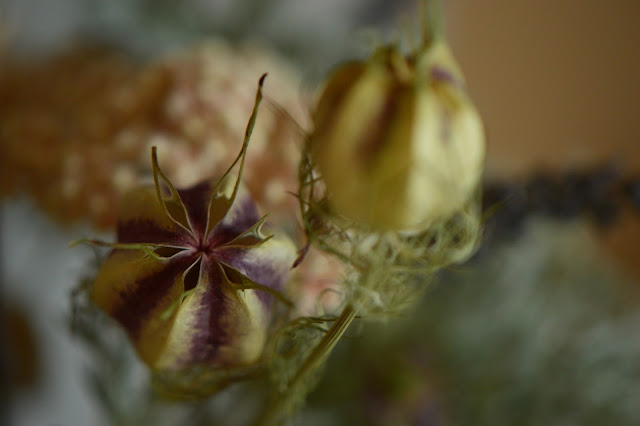This is the second summer in this garden, and June's
Garden Bloggers' Bloom Day seems a good time to take a close look.
This time last month I was watching the very last of the spring flowers. This time last year I was watching to see what would survive the first summer and, though hopeful, had no experience to rely on. Some of my confidence was misplaced, as were some of my fears.
But one of the fruits of watching plants turn brown last June and July was a reconsideration of which plants to rely on for summer. I nearly came to the conclusion that it would be a flowerless period, rather like January and February in colder climes. But driving around town told me that would be silly. There are lovely plants that bloom in the most impossible heat! Many originate in the tropics; heat and, surprisingly, even the low humidity does not stop them. So I laid my plans and put in some new plants.
And now I have the excitement of watching summer in the desert garden. There will be casualties, just as there are during a cold winter. But this year I get to see the summer blooms unfolding.
Hamelia patens, also known around here as Firebush, will hopefully grow into a strong shrub at the upper corner of the North Border. It suffered during last winter's brief frosty periods, but it has a reputation for coming back strongly from the roots, and it certainly did so!
Further down the border is Ruellia brittoniana, which settled in quickly and well.
I decided to add more lantana as well. At first I was perturbed by the scent of the leaves, but I decided that (especially as some people seem to love the smell) I had better get over my dislike in favor of having such a reliable summer-blooming plant for the garden. Although still not my favorite fragrance, I have no problems with it now, and I do have some wonderful blooms! This white variety was an addition for the White and Silver garden. I did not know whether it would be as sturdy as the more common yellows and oranges, so I've been happy to find it blooming and growing just as strongly. Here it is beneath Vaquelinia californica, my young Arizona rosewood, which will eventually have white blooms of its own in spring.
There is also Cuphea ignea "Vermillionaire", which came home blooming and has never stopped.
Perhaps the most exciting promise of summer comes from Caesalpinia pulcherrima. The first flower opened just a few days ago.
This plant could hardly look more exotic. It is a native of the tropics and is duly extravagant with its airborne flowers and lacy foliage. Despite its provenance it is very widely used here in Arizona, where it is called Red, or Mexican, Bird of Paradise. It is not, however, from Mexico, but most probably from the Caribbean; and perhaps the name used in Florida is more apt: Pride of Barbados. It is exquisite and, more surprisingly, fairly drought-tolerant. Like Hamelia patens, it can be cut down by winter cold but should grow back strongly in our climate.
Given its eventual size, it is placed as the main flowering focal point in the East Border though it is still too small to give any idea of the ultimate effect. I will need something else for those months when it is not in bloom or full growth, given the probability that it will die back each winter. A large shrub of such an ephemeral nature may take some adjusting to! But I will deal with that as it comes...
Other summer-flowering plants just getting into their stride are the two crape myrtles. Lagerstroemia indica "Rhapsody in Pink"...
...and R. i. "Dynamite"...
are intended to provide some much-needed height and structure in the garden. Their frothy blooms over dark red foliage is a wonderful accent.
Another idea that came out of last summer's garden was the use of more grasses. While I've not taken it very far, at least Pennisetum setaceum "rubrum" is one lovely result.
And at present it has another summer flower at its feet.
I discovered that locals highly recommend Catharanthus roseus (annual vinca, Madagascar periwinkle) as one "annual" (it can be perennial through mild winters) that can take the heat. Apparently so! It is looking a bit wilted in the photo above but perked up after a nice drink immediately afterward. It requires surprisingly little water, considering the amount of bloom. I am wondering how to make the most of this plant in future.
Finally, a glimpse of roses.
Although the large shrub roses are mostly resting at present, Wollerton Old Hall is giving its best, having the advantage of shade from the patio roof. It is superb.
I caught just one bloom from Sterling Silver as well.
But some of the best rose bloom right now comes from the miniatures. My lavender mini was covered in blooms a couple of weeks ago, though not now; and the nearby pink and cream boasts this little beauty.
But it is Daniela that makes entire bouquets on the bush. A dozen red roses anyone?
And there are, of course, the stalwarts: Russelia equisetiformis,
Berlandiera lyrata, and even
Chrysactinia mexicana still faithfully in bloom. This is not a particularly good time for Salvia greggii, though all still have a few flowers. Lavender "Goodwin's Creek Gray" is still a mass of bloomstalks as well. One shrub worth special mention is Alyogyne huegelii, which can apparently bloom more or less year-round and is certainly providing an occasional swirl of blue petals in the South Border.
But wonderful as the truly everblooming plants are, it is exciting to find that I can look forward to seasonal summer bloom even here in the desert.
Weather Diary: Fair; High: 99 F (37 C)/Low: 70 F (21 C); Humidity: 7%-28%






























































